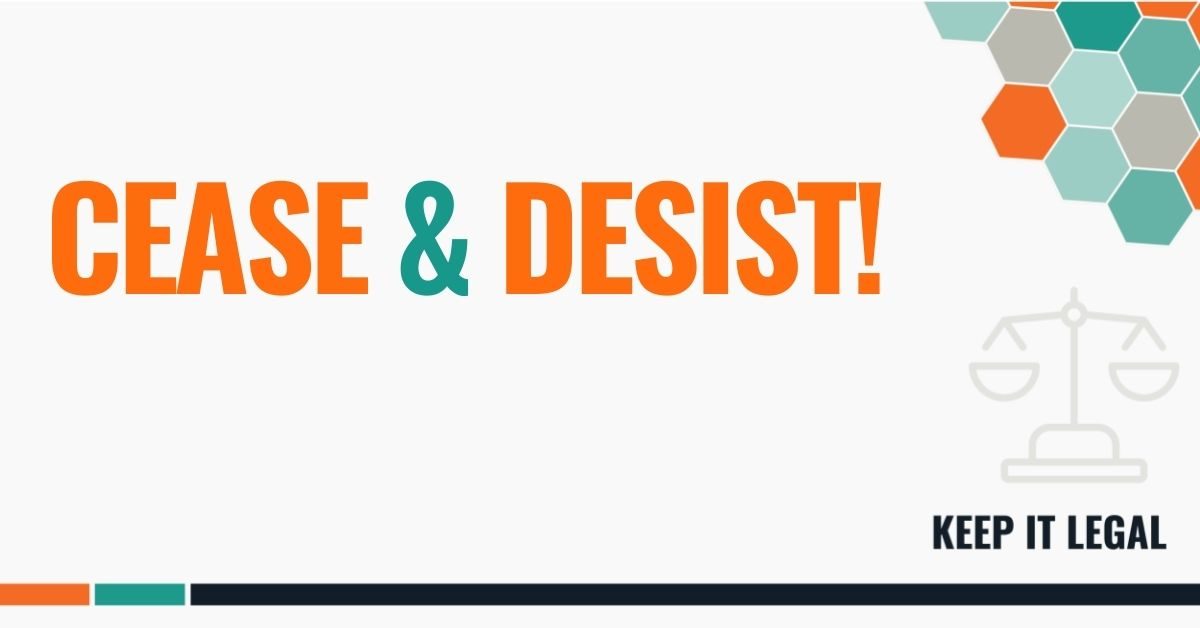So you’ve discovered that someone is infringing on your trademark. Now what do you do?
My clients often find that some other person or business is infringing on their trademark rights. They’re then faced with deciding what to do about it.
Ownership of a trademark (whether or not it’s been registered with a trademark office such as the United States Patent and Trademark Office) gives the owner, in many cases, the right to prevent competitors from using an identical or confusingly similar mark. By “trademark” or “mark”, I’m referring to anything that identifies you as the source of your goods or services, such as a business name, brand name, logo, or tagline.
Of course, every case is unique in the trademark world. So before you do anything, it’s important to evaluate whether or not there is a real infringement here. For example, if the marks are not identical, are they similar enough that there’s a likelihood of confusion? Meaning, how likely is it that someone who encounters the other party’s product or service will be led to believe that you’re the source? This is a question with a lot of layers, and working with an experienced transaction-based intellectual property attorney will help sort it out.
There could be other issues to address as well, such as whether the possible infringer actually has superior legal rights because, for example, they were using the mark before you were. You want to be careful and do your due diligence before going after an infringer; you never know when an attack will backfire.
Let’s assume you’ve looked into the matter and you now have a good faith belief that the other party is infringing on your legitimate legal rights. Typically the first step is to demand that the other party “cease and desist” their infringing behavior. This usually takes the form of a letter, but in some cases it could be communicated via other means, such as an email, through a contact form on a website, or even over the phone (although a verbal communication of this sort should be followed up in writing).
A cease and desist letter written by an attorney (or “C&D” as we call it in the trademark world) will contain details about who you are, what trademark or marks you own, and why you believe the recipient is infringing on your rights. It should include a demand that they cease and desist with specifics about what you want them to do or to stop doing. For example, you may ask them to stop using the brand name in connection with services, to change their social media handles, or to destroy any unsold inventory of physical goods bearing the mark. Usually there are a combination of demands.
In most cases the letter will include a deadline, and sometimes the letter will ask the alleged infringer for an accounting of profits.
Why do we send C&D letters rather than just filing a lawsuit? For one thing, a letter is much less costly than a lawsuit. In my experience, when someone receives a cease and desist letter from a law firm, they typically comply with the demand. Sometimes there’s some negotiation or initial resistance, but most businesses don’t want to end up embroiled in litigation, and if they take the time to run the letter past a trademark attorney who knows what they’re doing, they’ll usually be advised to admit defeat rather than fight a long and probably fruitless battle. Your transaction-based legal counsel can help to identify the strategy that works for you.
In some circumstances, you may want to go straight to court rather than sending a C&D letter. For example, if you know that a competitor is about to infringe on your trademarks and that the infringement will be very costly to you, it may be necessary to ask a court to enjoin the offending party from going forward with the infringement.
There are a variety of other approaches to take when you’re faced with a trademark infringement, such as initiating proceedings through the Trademark Office or sending takedown notices to social media sites where an offender advertises their goods and services. But cease and desist letters remain the most common tool in the arsenal of trademark protection.
If you need help protecting your trademark, feel free to contact me.


